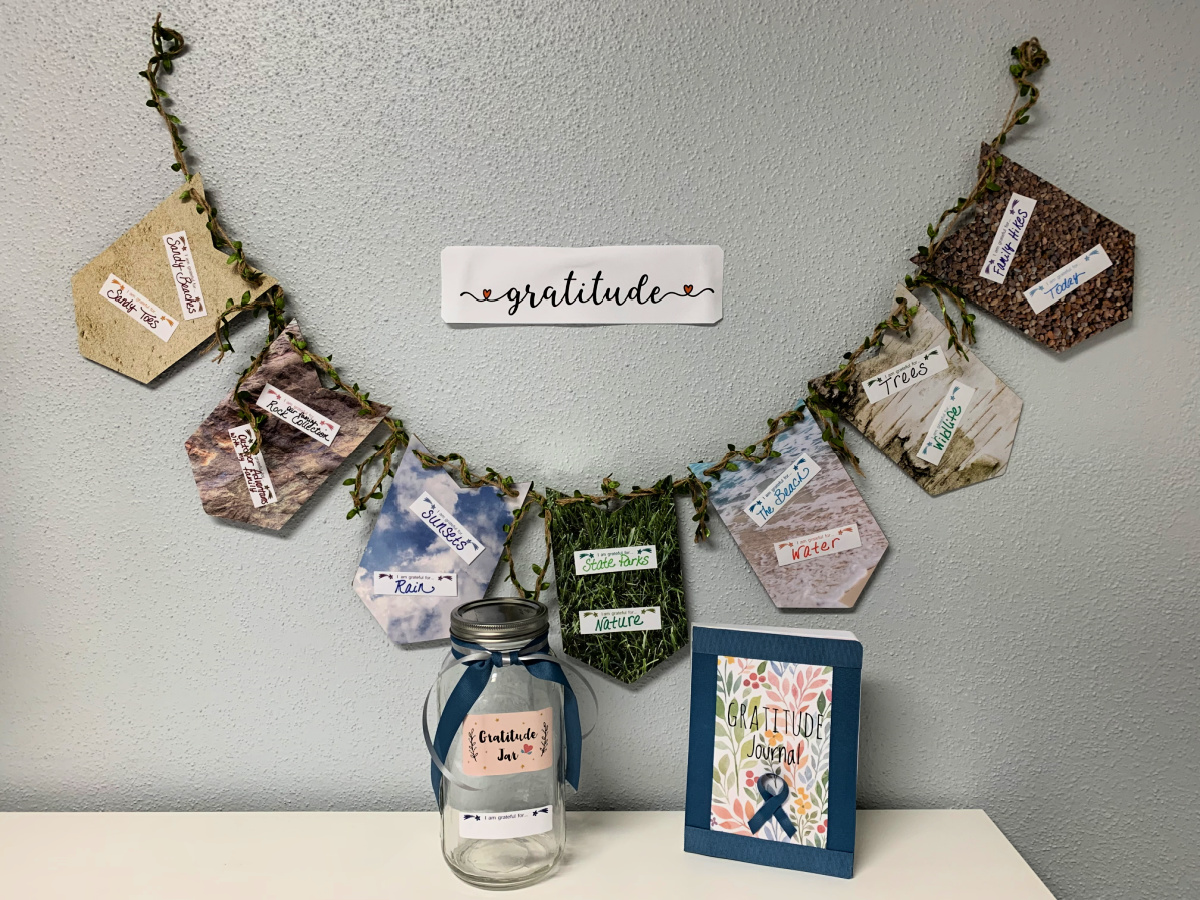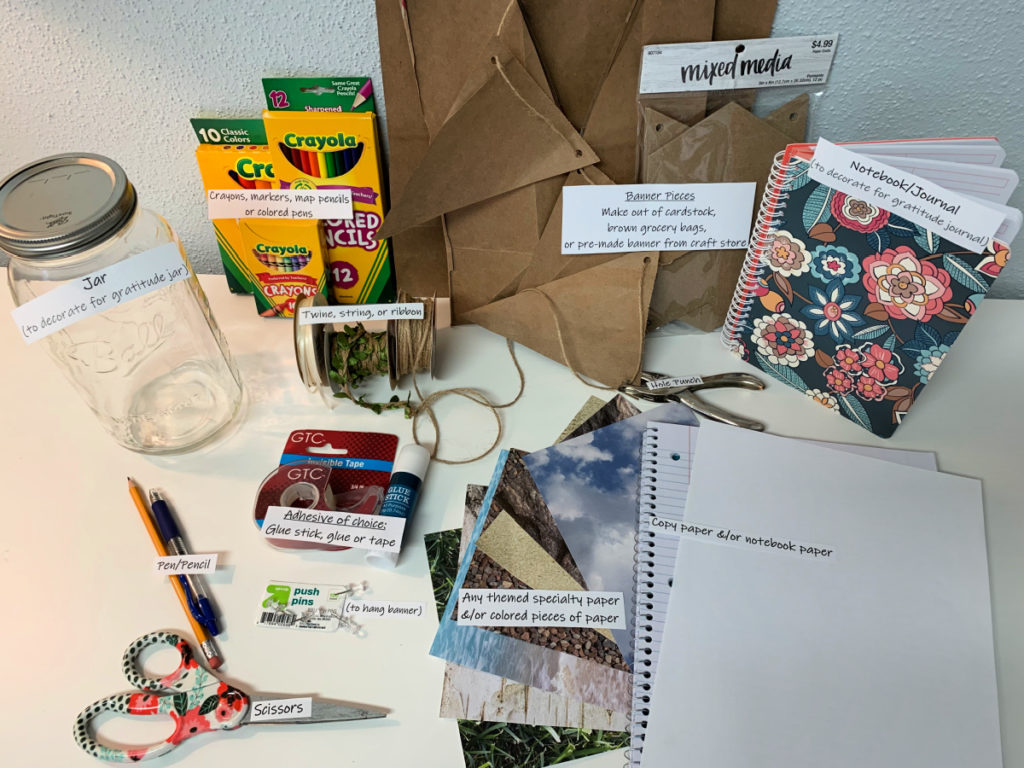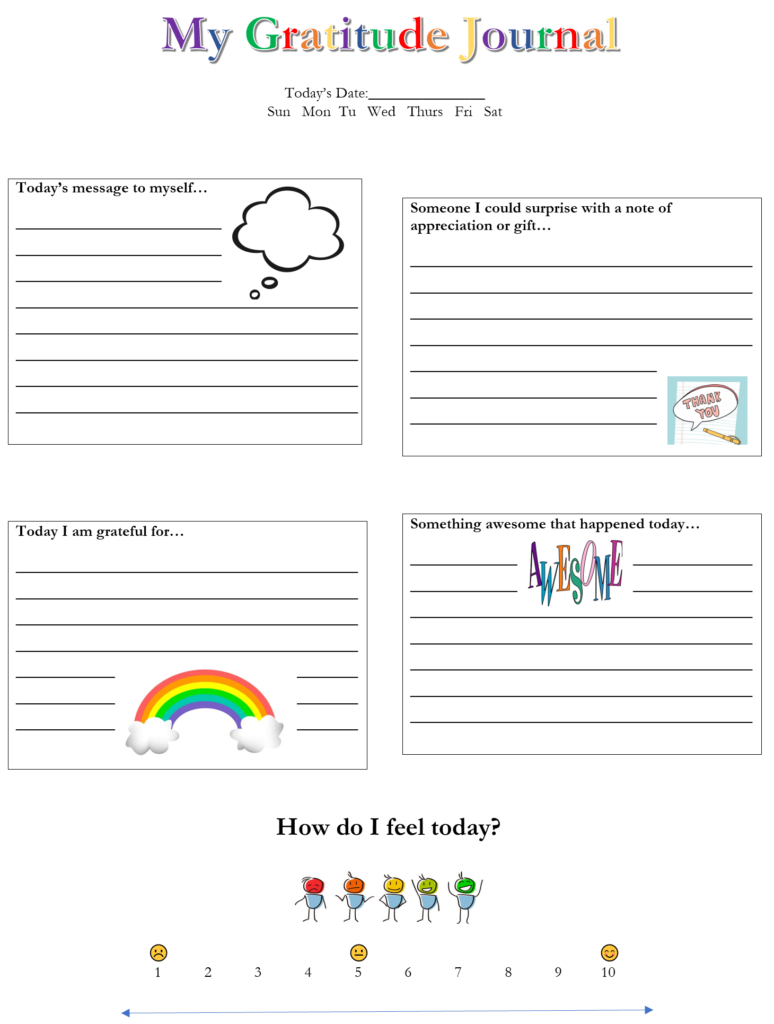
Gratitude Banner and Crafts for Daily Gratitude Practice
What are you grateful for?
How often do you ask yourself, your children, family members, or friends what they are grateful for?
When a special holiday rolls around, like Mother’s Day, Thanksgiving, or Valentine’s Day, we reflect and express our love for the people, acts of kindness, and happiness in our lives. Children bring home craft activities in the shapes of turkeys or hearts, and in colors like pink, orange, or red. Conversations about love and gratitude flow in our homes. But after the holiday passes and as we move on to the next season, where do those crafts and conversations go? We pack up the holiday décor, get back to our busy day-to-day lives, and move onto the next holiday.
Think about a time when you exchanged and shared an expression of gratitude with family or friends. Smiles are on faces, heads nod in agreement, hearts are filled, and there’s an overall feeling of happiness and fulfillment.
Gratitude Practice
Love and gratitude aren’t just for a particular month or specific holiday. It’s actually a scientifically proven practice, that if done on a regular basis, can open our minds, fill our hearts, and change our mindset!
One general definition of gratitude is “the appreciation of what is valuable and meaningful to oneself; it is a general state of thankfulness and/or appreciation.” (Sansone & Sansone, 2010, p. 21)
When you reflect on your day, do you think about all of the things that went right or the one thing that went wrong? The negative one, right? That’s because our brain’s tendency is to register negatives and hold on to them longer. Shifting negative emotions into positive ones is a powerful outcome of gratitude. Think about it—can you name a time when you were holding onto negative thoughts while simultaneously feeling truly grateful? Probably not.
Positive Thinking
By practicing gratitude, we’re actually wiring positivity into our thinking. (Silver & Stafford, 2017, p. 221) “Our implicit memory—underlying expectations, beliefs, action strategies, and mood—is geared for the negative, but it only takes twenty seconds for neurons to fire and wire together, so actively practicing the positive in gratitude can literally rewire our brains.” (Hanson, 2014) (Silver & Stafford, 2017, p. 222)
According to Robert Emmons, Professor of Psychology at UC Davis, “The practice of gratitude can have dramatic and lasting effects in a person’s life.” Studies at UC Davis show that individuals who practice daily gratitude experience less stress and better health translating to happier and healthier lives. (UC Davis Health, 2015)
Research tells us that grateful people are happy people, so let’s go back to the question that started this blog: What are you grateful for? At Brooks Academies of Texas, we build gratitude practice and mindfulness into our curriculum. You can build a daily practice at home with these gratitude crafts: a journal, a jar, and a banner. Start practicing gratitude today!
Gratitude Craft #1: Make a Journal
Keeping a gratitude journal is about taking a few minutes to reflect on what you are grateful for (big and small) and writing them down. Keeping a gratitude journal can help you develop appreciation and experience happier moments in life.
For more information, visit Gratitude Journal at Greater Good in Action.
Materials Needed
Any notebook
Pen or pencil
Crayons, markers, map pencils, or colored pens
Optional—sample gratitude journal worksheet
Gratitude Craft #2: Make a Jar
Families, classrooms, or any group can write down something they are grateful for (big or small) on a piece of paper and place it in a gratitude jar. At a designated time, the gratitudes can be shared aloud. A gratitude jar gives the group a positive focus and helps cultivate grateful attitudes.
For more information, visit How to Start a Gratitude Jar (And Why it Will Change Your Life) by Josie Robinson.
Materials Needed
Any jar
Items to decorate the jar, like ribbon or stickers—or draw a picture to place on your jar
Sample gratitude jar label and message notes can be found here.
Gratitude Craft #3: Make a Banner
A gratitude banner is a visual reminder of your gratitudes and can be shared as a family, classroom, or with any group that meets together. Each day or every time you meet, each person can add another gratitude to the banner. Every time you see the banner, you can read additions and add more. Gratitude banners works best when displayed in a well-traveled, prominent location, like in the family living room or the whiteboard of a classroom.
For more information, visit Printable Gratitude Banner Template at The Daily Hostess.
Materials Needed
If you have a craft scrap box, this is a great project to use some of those materials!
To make the banner pieces, you’ll need a few pieces of card stock or brown paper grocery bags. If preferred, you may purchase blank banner or pennant pieces from a craft store.
Paper: start with a few pieces of white copy paper or notebook paper, or use any themed specialty paper, colored paper, etc.
Scissors
Hole punch
Twine, string, or ribbon
Pencil or pen
Crayons, markers, map pencils, or pens
Adhesive like glue stick, glue, or tape
Push pins (to hang banner)
Optional—stickers or miscellaneous embellishment for decorating
Resources About Gratitude
Hanson, R. (2014, June 1). Do positive experiences “stick to your ribs”? Take in the Good.
Sansone, R.A., Sansone L.A. Gratitude and well-being: the benefits of appreciation. Psychiatry (Edgmont). 2010; 7(11):18-22.
Silver, D., & Stafford, D. (2017). Chapter 9: It’s All About Gratitude. In Teaching kids to thrive: Essential skills for success (pp. 217-237). Thousand Oaks, CA: Corwin.
UC Davis Health, D. (2015). Gratitude is good medicine.
For more ideas about learning experiences you can do at home with your kids, visit the main page, Charter a Voyage of Learning. For activities about social emotional wellness, we recommend Digital Parenting, Making Faces, and Grumpy Pants, as well as Mindfulness Moments with Yoga for Classrooms.
Learn More About Brooks Academies of Texas
“Guide to Enrolling in Brooks Academy Charter Schools in San Antonio for 2021–2022,” San Antonio Charter Moms, December 17, 2020
“Charter Moms Chats—Class of 2020, with Adina Ichilov,” San Antonio Charter Moms, May 15, 2020
“Charter Moms Chats—Virtual Learning, with Andrea Sabatino, Brooks Academies,” San Antonio Charter Moms, May 7, 2020
Charter Moms Chats
Watch Paula Turner speak with Inga Cotton about gratitude crafts on Charter Moms Chats on Friday, April 30 at 9:00 AM Central on Facebook and YouTube.
About the Author
Paula Turner is the Social-Emotional Learning Coordinator at Brooks Academies of Texas. She is the mom to three young men: a 19-year-old student at Texas A&M, a 21-year-old who is moving to Boston next month to attend graduate school, and a 23-year-old graduate of Angelo State University. She started teaching first grade in 1990 and has experience as a TEA-certified teacher, counselor, and administrator. Paula joined the team at Brooks in 2017 and considers herself blessed to have found her school heaven.



